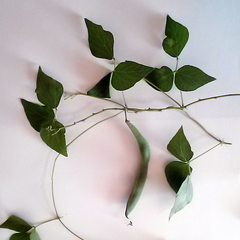








http://www.greenshireecofarms.com
Zone 5a in Central Ontario, Canada
 1
1




Idle dreamer








![Filename: red-orach1.jpg
Description: [Thumbnail for red-orach1.jpg]](/t/4474/a/9650/red-orach1.jpg)
![Filename: red-orach2.jpg
Description: [Thumbnail for red-orach2.jpg]](/t/4474/a/9651/red-orach2.jpg)
Our inability to change everything should not stop us from changing what we can.
 2
2




Brenda
Bloom where you are planted.
http://restfultrailsfoodforestgarden.blogspot.com/

 1
1




Brenda Groth wrote:
perennial kale and broccoli are only hardy to zone 6 so they won't work for you and likely the yam wouldn't either but i'm not sure of it's zone.
http://www.greenshireecofarms.com
Zone 5a in Central Ontario, Canada




Brenda
Bloom where you are planted.
http://restfultrailsfoodforestgarden.blogspot.com/





Brenda Groth wrote:
wow Travis that is great to know, as I wanted to try them here but figured with all the info i'd seen they wouldn't grow here..do you happen to have a source for the ones that you have tried that have grown well in your zone 5, my zones are 4/5 here and i'm sure that if you can get them to grow in zone 5b it would be worth a try in mine..can't hurt
http://www.greenshireecofarms.com
Zone 5a in Central Ontario, Canada





 2
2
















Brenda
Bloom where you are planted.
http://restfultrailsfoodforestgarden.blogspot.com/




iamamonster wrote:
Im pretty sure Eric Toensmeier posts on this forum, but just incase he is above shameless self-promotion, please consider this excellent book and website:
http://perennialvegetables.org/





http://www.greenshireecofarms.com
Zone 5a in Central Ontario, Canada
 1
1



















 1
1




![Filename: strawberry-spinach2.jpg
Description: [Thumbnail for strawberry-spinach2.jpg]](/t/4474/a/9648/strawberry-spinach2.jpg)
![Filename: starwbery-spinach.jpg
Description: [Thumbnail for starwbery-spinach.jpg]](/t/4474/a/9649/starwbery-spinach.jpg)
Our inability to change everything should not stop us from changing what we can.









Our inability to change everything should not stop us from changing what we can.
 5
5




 3
3




Mandrake...takes on and holds the influence
of the devil more than other herbs because of its similarity
to a human. Whence, also, a person’s desires, whether good
or evil, are stirred up through it...
-Hildegard of Bingen, Physica
 3
3





Check out the Food Forest Card Game: https://permies.com/wiki/141665/Food-Forest-card-game-English
 2
2








Check out the Food Forest Card Game: https://permies.com/wiki/141665/Food-Forest-card-game-English

| I agree. Here's the link: http://stoves2.com |






